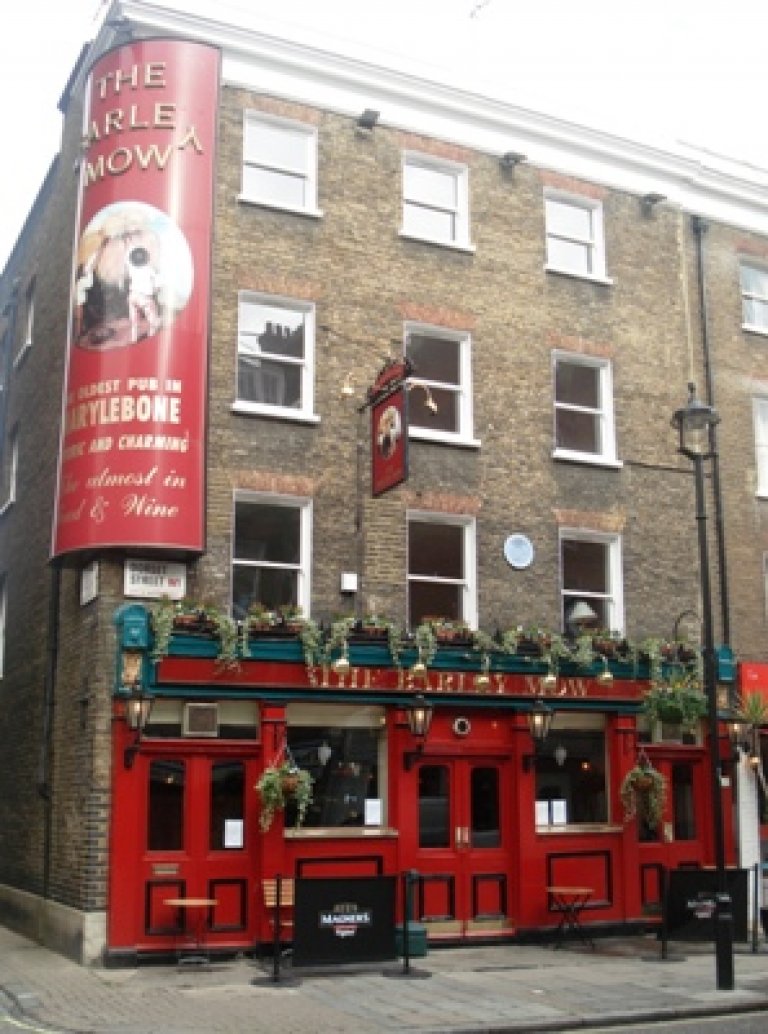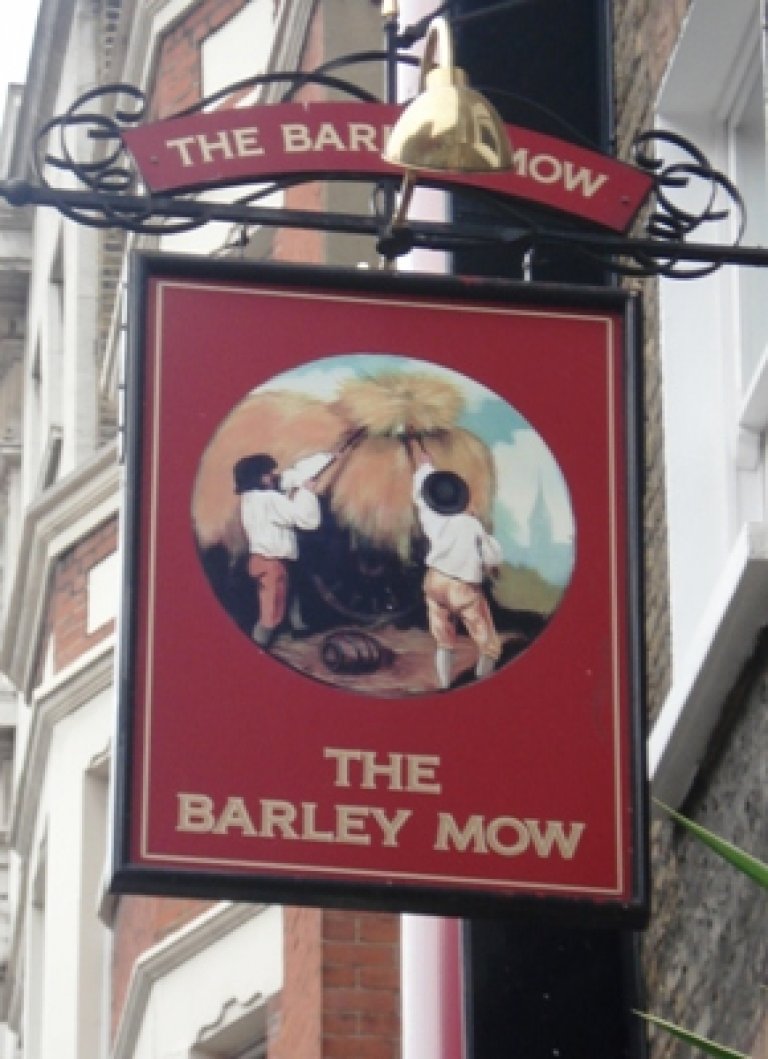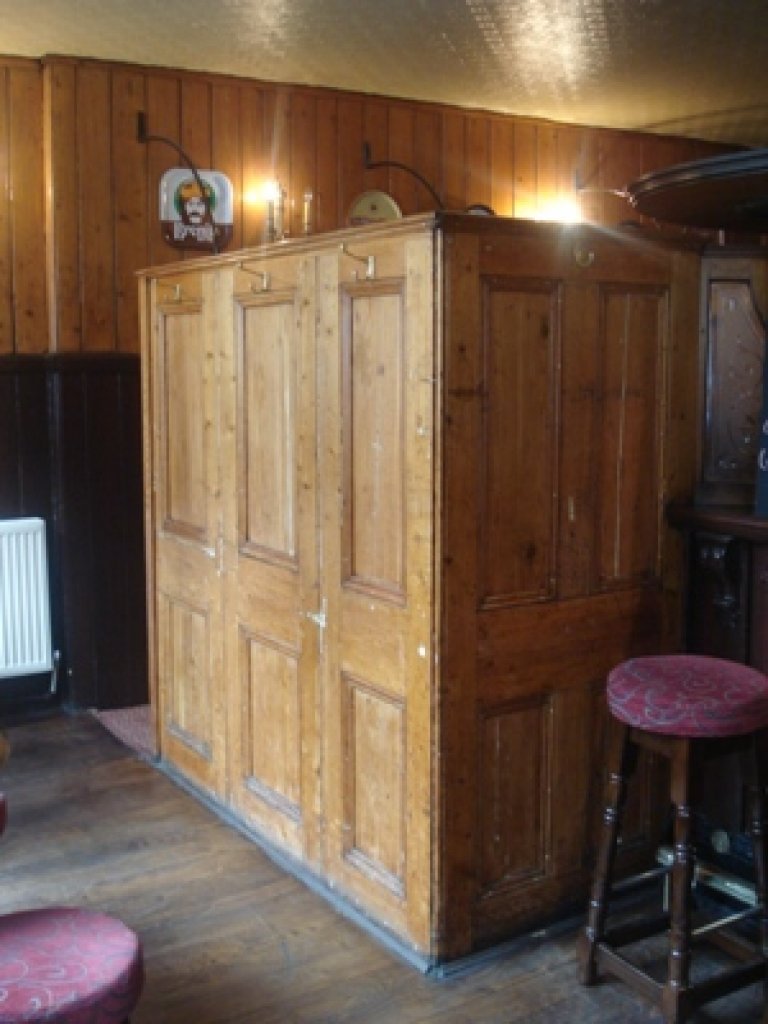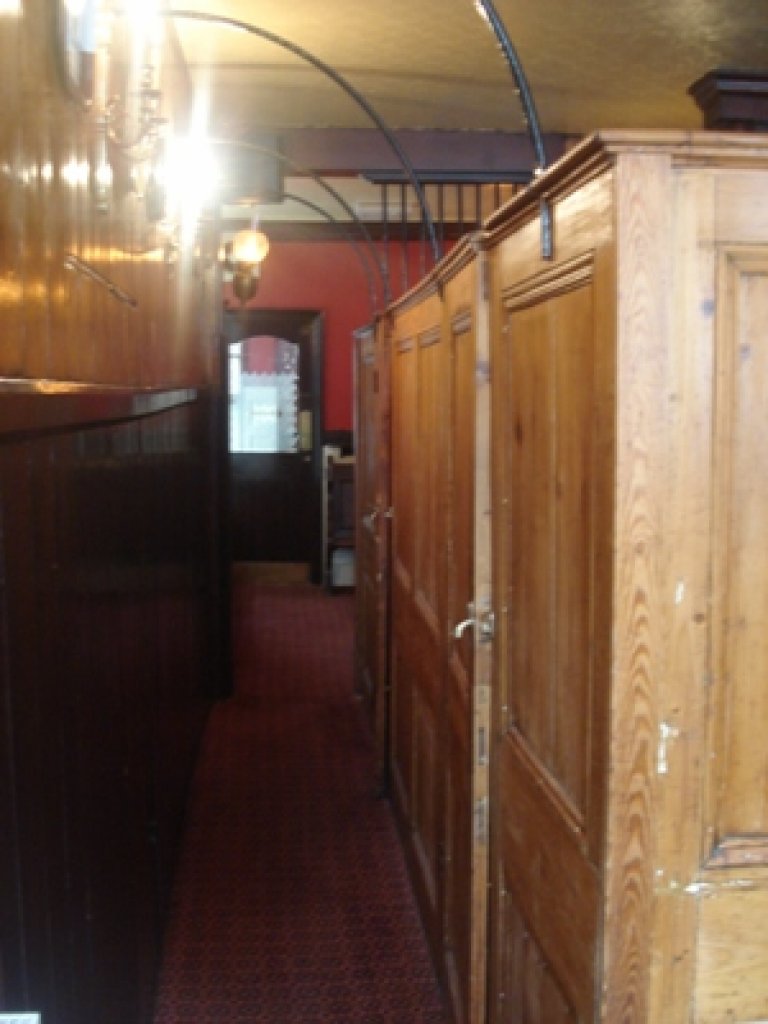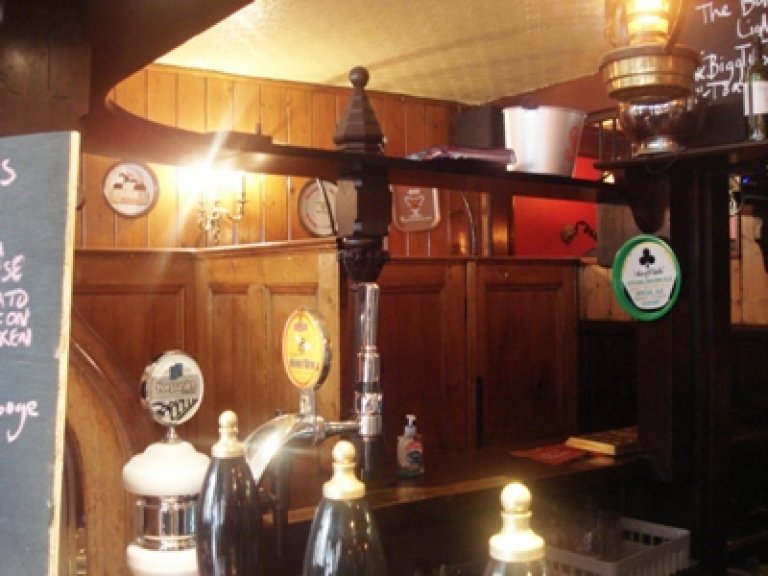Barley Mow
8 Dorset StreetMarylebone
W1U 6QJ
This pub is not only a grade II listed building, it is also a Three Star pub on the Campaign for Real Ale’s (CAMRA) National Inventory with an interior of outstanding national historic importance, and the description is as follows: "A late 18th century pub containing two remarkable drinking booths.
A four-storey building of 1791 which houses an unique interior feature of extraordinary interest. There are two small drinking booths on the left-hand side of the bar, both surrounded by five-foot-high wooden screens and suggestive of heightened box-pews in a church. Each can comfortably hold only two or three people - although four or five might just be able to squeeze in. They are an extreme example of how the Victorians loved cosy drinking spaces. It is claimed the boxes were once used for pawn-broking although this is questionable.
The drinking booths form a narrow corridor between them and the wall, and over this are four curving metal stays attaching the booths to the left-hand wall panelling. This corridor leads to a small rear room served by its own counter, a continuation of the main counter at the front. This rear room has old half-height panelling on all walls. A pot shelf here is modern but done in a style that sits happily with the rest of the pub. A door from here is still in situ and leads into a small corridor off which is a doorway (door now gone) that connects back to the front bar. Attached to the bar counter in two places are brass plaques which, unusually, list the names and prices of some drinks. Although now very worn, they are just about legible: “Pale Brandy, Old Jamaica Rum, Old Tom... Prices 2/6, 13/-” and so on.
There are three sets of double doors at the front of the pub, evidence that what today is a deliciously small pub was even further sub-divided. The remnants of a small vestibule around the central doors contain etched, patterned glass whose raised surfaces suggest it has some age to it."
The listing description is as follows: "Public house. Late C18 with late C19 ground floor frontage. MATERIALS: stock brick. Brick end stack. PLAN: corner site. Large front bar with central servery. Small left-hand rear bar. Short corridor at rear axial with the main facade. EXTERIOR: 4 storeys. Timber and glass public house frontage with 3 sets of double doors. Late C20 etched glass. Consoles frame the name band fascia. Each upper storey has 3 plain pane sash windows. Moulded cornice and plain parapet. Roof concealed. Return elevation with a multi-paned fixed window on the ground floor; 2 of the lower panes with late C19 etched glass (the third pane a late C20 replacement). On upper floors, 2 plain pane sash windows on each floor. Entrance at rear with late C20 doorcase. INTERIOR: Bar counter with rectangular panels, small consoles on plain pilasters. Side walls with match board panelling to full height. Attached to left-hand side of the bar counter 2 small, late C19 cubicles with fixed seats and doors. Bar back partly C19. Attached to it a C19 brass tap for drawing gin. Attached to the bar counter 2 brass plates advertising spirits; plate at the rear also states prices. Pot shelf over counter is mid/late C20. Rear bar and corridor have fielded panelling of c.1800. A metropolitan street corner public house, with good C19 detailing surviving internally and externally. Drinking cubicles were once commonplace in public houses but are now an exceptionally rare survival."
The WhatPub link is here: WhatPub/Barley Mow
The Pub Heritage Group link is here: PHG/Barley Mow
The Barley Mow featured on the Evening Crawl of Marylebone on 19 April 2006.
